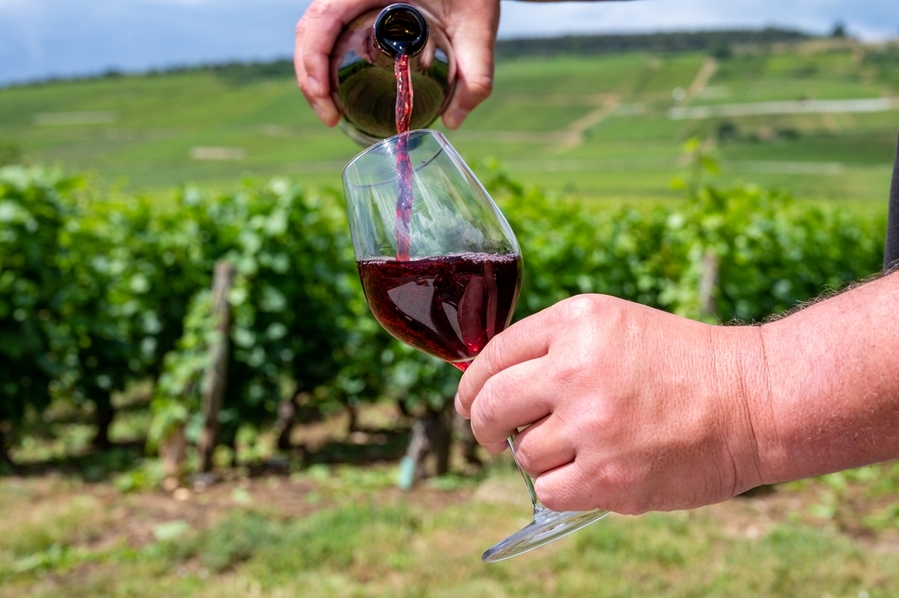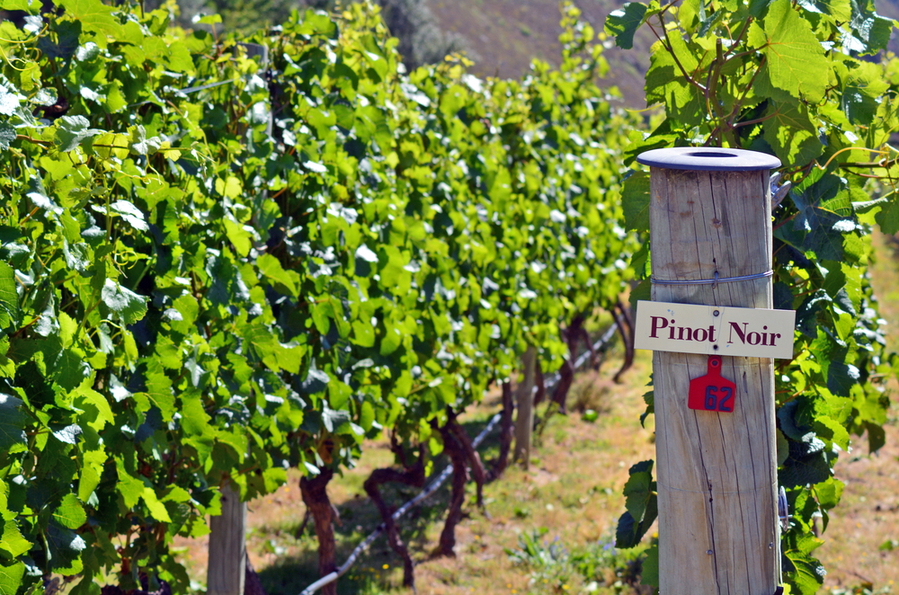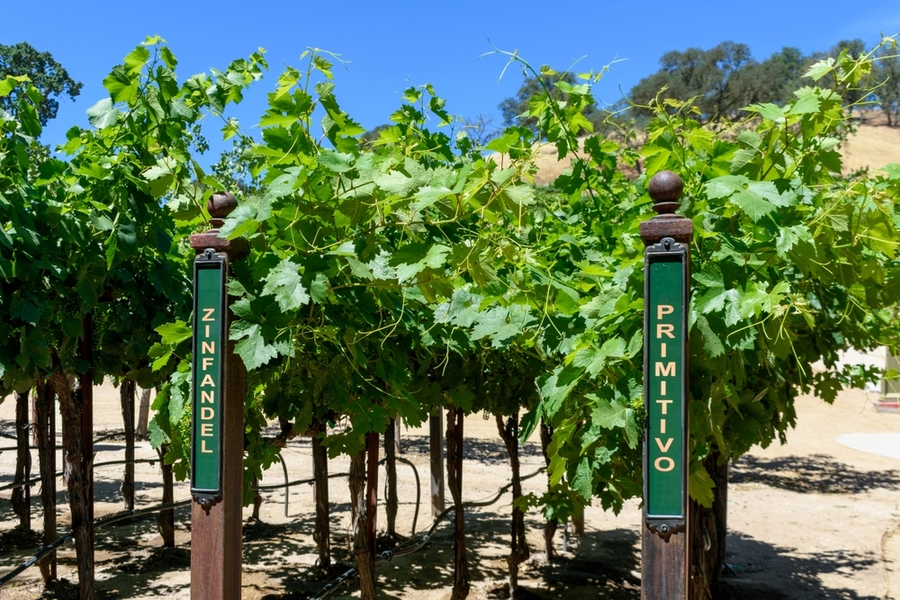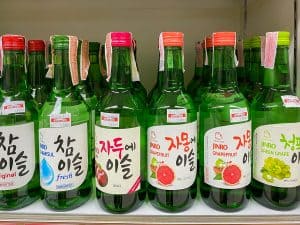
Pinot Noir is one of the most popular red wines in the world, while Zinfandel might be a bit more obscure, but a surprising choice nonetheless.
Pinot Noir is beloved and famous for its hints of mushrooms and earthiness in the finish, with fruity flavors leading the way in the dry acidity and light body.
However, Zinfandel doesn’t have to stand in the corner and can hold its own—it has complexities. It tastes sweeter than Pinot Noir with flavors such as jam, candied fruit, and berries; however, the finish is strong with notes reminding you of smoke, spice, and all things nice associated with a barbeque.
Because Pinot Noir is notoriously difficult to grow, it attracts a high price tag, but the layered taste is worth the expense. Zinfandel is not as difficult to grow as Pinot noir. While it is less nuanced in flavor, its boldness, relatively low cost, and higher alcohol content make it a bold wine that can hold its own in formal and informal settings.
We’ll explore the differences between Pinot noir and Zinfandel below. Both may be red wines, but they are worlds apart regarding taste, alcohol content, and viticulture. Let’s dig in!
Taste
Probably the main reason why people drink wine is that (a) they like it, (b) it tastes great, (c) it is a culture passed down through millennia, and (d) it brings people together. Well, that’s what we think; we love exploring and drinking wines.
Pinot Noir Taste

Pinot Noir is known for its fruity, silky, supple taste and mouthfeel—slightly more complex than a bottle of Merlot—but not quite as popular as Cabernet Sauvignon.
However, apart from being a good wine, it is also very drinkable due to its lower tannins and lighter body. In addition, Pinot Noir has an underlying earthiness that helps complement many dishes and is enough to tease your palate with exciting tastes.
Californian Pinot Noir (more about viticulture later) gives a range of flavors—you can expect the apparent cherry and raspberry notes, but when imported French oak barrels are used in the aging process, notes of vanilla, allspice, and Darjeeling tea emerge.
The ABV isn’t too high either—it clocks in between 11.5% and 13.5% ABV, making it an easy-drinking wine you can serve in various situations, from a backyard barbeque with friends to a fundraiser with high-net-worth individuals while serving haute cuisine.
Zinfandel Taste

Wine snobs sometimes bash zinfandel because it lacks the complexity of other red wines. But if you’re feeling patriotic, this is the wine for you! In addition, many consider Zinfandel to be America’s wine variety because it isn’t grown in many places outside the US.
The wine has a higher alcohol content (14—17% ABV) than Pinot Noir. The ABV adds an oily texture and a bolder body to the wine. You can expect a fruity taste that leans towards strawberry-like or jam-like sweetness.
But it doesn’t stop at sweetness. You’ll also notice spices such as licorice and black pepper with a smoky tobacco finish. An easy drinker that maintains its complexity.
The tastes between these two wines differ vastly, but that is also what makes them so unique—Pinot Noir is more subtle with a lighter alcohol ABV while Zinfadel’s higher ABV results in a bold wine with a pronounced taste.
Viticulture
According to the Merriam-Webster dictionary, viticulture is “the cultivation or culture of grapes, especially for wine-making.”
Okay, we all know that grapes grow on vines and are later pressed to release their juice, fermented, and finally, we have delicious wine to drink.
Basically, before we can have wine, vintners need to grow their grapes and harvest them —this is where factors like temperature, harvesting, growing conditions, and a whole lot of other factors play an essential role.
We’ll look at how Pinot Noir and Zinfandel grapes are grown and how this influences the final wine’s taste.
Pinot Noir

Pinot Noir is a notoriously difficult grape to grow. The grapes are thin-skinned and grow in tight clusters resembling pine cones. Pair this with susceptibility to diseases and rot.
And let’s not forget, the grapes may even burst open after a rainfall, or when the heat is too high, they tend to dehydrate and shrivel. The vines also have relatively low yields, meaning the production cost is higher, and the wines are more expensive. It sounds like a nightmare and almost not worth the trouble, right?
Thankfully growers disagree and take the patience and care these grapes deserve to bring us Pinot Noir wine.
Let’s go a step further. Because the grapes are so sensitive to terroir and temperature, examples from all over the world are different from one another, but still unmistakably, Pinot Noir. In the US, California and Oregon are where Pinot Noir thrives.
You may think California is too warm for these sensitive grapes to grow. Still, it excels due to the Pacific Ocean’s cooling breezes and morning fog in Sonoma, Southern Napa Valley, Russian River Valley, Anderson Valley, and the Southern Napa Valley.
Going further south, places like Santa Barbara County and the Santa Ynez and Santa Maria Valleys, along with Santa Rita Hills, are where more earthy variations are produced.
California’s ample sun and the controlled temperatures aided by the Pacific Ocean certainly make wine producers’ task much easier to pick the perfect moment for picking grapes at optimal ripeness.
Oregon benefits from a climate that ranges from warm in the southern regions to cooler temperatures found in Columbia Gorge. The Willamette Valley (home to over 700 wineries) is known for its excellent Pinot Noir wines.
It is protected from the Pacific Ocean’s cold temperatures and heavy rainstorms in the west by the Coast Range mountains.
To boot, the state has conducted decades of research into site selections, soil conditions, and Pinot Noir clones to improve the quality of wine produced in the region continuously.
The seasons also allow the grapes to develop to their full potential: summers are warm during the day but cool at night, a long and mild autumn with the first winter rains paired with sunny days to dry the grapes again, a mild winter, and a long spring that gradually develops into summer again.
Zinfandel

Like Pinot Noir, Zinfandel grapes also have thin skin, which makes them susceptible to vineyard diseases and drying out prematurely if the temperature is too high. As a result, the vines yield large clusters of tightly packed berries, but they don’t always ripen simultaneously.
Instead, some winemakers pick the individual berries for a few weeks.
Other winemakers prefer harvesting and using grapes with varying ripeness levels to create sweeter wines with more diverse flavors. Others still prefer to harvest their grapes when they are ripe, leading to a sweeter wine because they contain more natural sugars.
Zinfandel grapes are also known for their adaptability to different growing conditions, but California is where Zinfandel thrives today, with over 47,000 acres of the vine planted. However, the grape also grows well in other regions, including Australia and South Africa.
In California, the grape is grown in a wide range of climates, from the hot and dry Central Valley to the cooler coastal regions. The terroir also plays a significant role in the flavor profile of Zinfandel wines.
For example, Zinfandel grown in the warmer regions of California’s Central Valley tends to have higher alcohol content and a more fruit-forward flavor profile, while Zinfandel grown in the cooler regions along the coast can have a more nuanced flavor profile with notes of spice and herbs.
History Lesson of Both Grapes
The history of Pinot Noir and Zinfandel grapes is fascinating and goes back several centuries.
Pinot Noir

Burgundy is regarded as the spiritual home of this ancient grape variety.
The name itself is derived from two French words: Pinot, meaning pine because the clusters resemble a pinecone’s shape, and Noir meaning black due to the dark color of the grapes’ skin.
While we don’t understand the detailed history of the grape variety, research suggests the Celts were growing Pinot Noir as early as the first century BCE. Others suggest the Romans brought it along when they conquered ancient Gaul (today, France).
We don’t know whether the grape was already there or whether the Romans brought it along and planted the vines; they certainly loved it so much that they documented it, pressed wine from it, and exported the vines all over Europe to their outposts.
Fast forward to the Middle Ages and the Crusades. Many Burgundian dukes were happy to increase their chances of reaching heaven by going on holy missions for God and helping out in the Holy Land.
They left their estates to the Roman Catholic Church, and because many did not return, the church ended up with acres of real estate and vineyards. We have the Cistercian monks to thank for dedicating themselves and their monasteries to keep an eye on the vineyards and developing wine-making techniques.
They took their duty to God very seriously because they believed it brought them closer to him. They were also serious about their responsibility towards the vineyards and kept excellent records on the vineyards—where vines thrived and where they withered.
They made wines and detailed the taste, color, and the aromas. They also created the theory of terroir and its influence on the grapes and resulting wines, an idea we still use today.
Pinot Noir grapes are a bit naughty and a bit of a genetic wonder wrapped into one. The vines self-pollinate, so you’ll end up with the same grapes year after year.
But, as the vines age, they morph, and new characteristics can emerge unique growth traits, earlier or ripening, tighter or looser clusters or aromas and textures changing. Pinot Gris and Pinot Blanc are two of Pinot Noir’s mutations.
Zinfandel

Zinfandel is not as old as Pinot Noir, but archaeological studies have shown that the grapes were domesticated around 6,000 BCE in the Caucasus region. We do not know who grew the grapes first, but its history spans from the Stone Age to Boston in the 1800s, with historical stopovers in Austria and Italy.
The Boston vintage of Zinfandel can be traced back to Austria, where these grapes were known as Zierflandler, and the vines arrived on US soil from the Imperial Nursery of the Holy Roman empire.
The grape’s Italian sojourn dates to 1870 when Zinfandel was introduced to Italian growers as Primitivo, or ‘the first to ripen.’ The grapes ripened much earlier than other red grape varieties.
Whether the grapes first arrived in Italy or Austria remains an unanswered question because the grapes were only recorded in 1870.
Zinfandel grapes made their way to California’s wine country and quickly became a staple of the West Coast’s vineyards. Sometimes it is referred to as ‘America’s Wine Grape’ because it is California’s most popular and widely grown grape.
Final Verdict
| Pinot Noir | Zinfandel | |
|---|---|---|
| Grape Characteristics | Thin skins, susceptibility to rot and diseases, and sensitivity to temperature | Thin skins, susceptibility to rot and diseases, and sensitivity to temperature |
| Wine | A versatile wine, known for its different layers and complexity, light-bodied, darker color | Moderate tannins and high acidity, more full-bodied, complex flavors, a smooth taste, and lighter color bordering on rosé |
| Maceration | Cold maceration | Partial maceration |
| Price | Medium price range – reflects its quality and difficulty in growing | Lower price range – much easier to grow and produces higher yields |
| Aging | Can be aged in a cellar for anything between 2-18 years | Isn’t known for its aging abilities |
| Food Pairings | Snacks and charcuterie boards, tender meats, mushrooms and root vegetables | American barbeque, spicy foods, smoked cheeses, tangy flavors |
Conclusion
Both these wines deserve any wine drinker’s attention. We recommend holding your mini-tasting event where you compare similarly priced bottles of Pinot Noir and Zinfandel side-by-side to discover each wine’s unique qualities. It can turn into a fun event!









